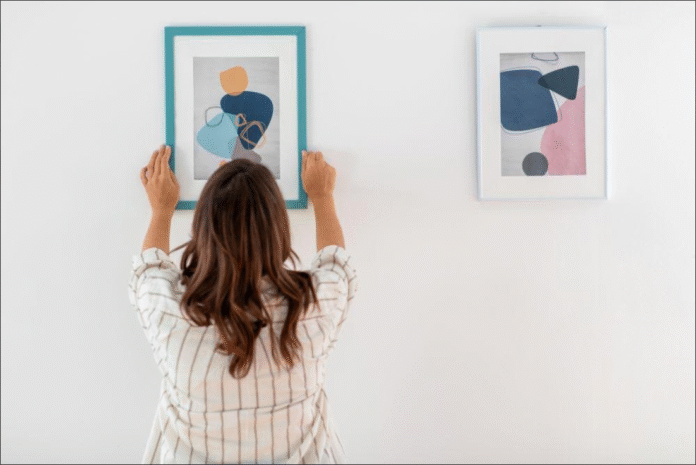Bringing art into your home is more than just hanging a painting or placing a sculpture on a shelf—it’s about creating a connection between the piece and the space it occupies. Whether you’ve bought a bold abstract, a delicate watercolor, or a striking photograph, there are countless ways to make it feel integrated and intentional.
With a few thoughtful touches, your purchased art can become a true focal point that reflects your personality and style. The key is to approach art display as a creative process, not just a task to get done.
Curate a Themed Gallery Wall
One of the most effective ways to make your art stand out is by creating a themed gallery wall. This approach involves grouping pieces with a unifying element—such as similar color palettes, subject matter, or framing styles—so they feel connected yet diverse. The arrangement can be symmetrical for a polished look or asymmetrical for a more organic feel. It’s important to play with spacing and size to avoid visual monotony while still maintaining cohesion.
Adding a few small decorative items, like mirrors or wall-mounted sculptures, can enhance the visual rhythm. Thematic consistency helps tell a story through your wall, giving visitors an experience rather than just a view. A well-curated gallery wall can instantly transform a bland area into a captivating conversation space.
Have It Framed with Care
The right frame can completely transform the way an art piece is experienced, adding depth, elegance, and even a hint of drama. Professional framing not only elevates its visual appeal but also safeguards the piece for years to come. The frame’s material—whether warm, classic wood, sleek metal, or modern acrylic—paired with the right matting, can enhance the artwork’s colors, textures, and overall mood. A minimalist frame might give modern prints a sharper, more contemporary edge, while an ornate, gilded frame can heighten the timeless sophistication of a traditional oil painting.
If you prefer a more personalized touch, seeking the guidance of a professional can be invaluable. Many custom framing services, like Picasso Gallery Custom Framing, offer a wide range of styles and finishes to complement both the artwork and the character of your home. Their expertise allows for careful selection of materials and design elements that enhance the piece’s visual appeal while ensuring its long-term preservation. The result is a display that not only safeguards your artwork but also reflects your unique aesthetic and sense of style.
Play with Lighting for Dramatic Effect
Lighting can make or break how art is experienced. Even the most striking painting can look flat without proper illumination. Accent lighting, such as track lights or picture lights, draws attention to the piece and enhances its texture, color, and details. You can also experiment with dimmable LED spotlights for adjustable ambiance or use warmer bulbs to bring out richer tones.
If you prefer a natural feel, position the art where it benefits from indirect sunlight—just be mindful of UV exposure, which can cause fading. Shadows and highlights created by intentional lighting can add depth, making your artwork feel almost alive. Thoughtful lighting turns your art into more than decoration; it becomes an immersive experience.
Integrate Art into Unexpected Spaces
Art doesn’t have to be confined to living rooms and hallways. Placing pieces in unconventional locations can add personality and surprise throughout your home. Consider hanging a small abstract in the kitchen, a framed sketch in the bathroom, or a vibrant print in a walk-in closet.
You can also lean larger pieces on a console table or bookshelf instead of mounting them on the wall for a relaxed, contemporary vibe. These unexpected placements make your home feel curated rather than staged. By weaving art into everyday spaces, you ensure that your pieces are not just seen but lived with, giving them a deeper sense of connection.
Refresh the Surroundings Seasonally
Your art may stay the same, but the way you display it doesn’t have to. Changing the surrounding décor seasonally can keep the space feeling fresh and dynamic. In spring and summer, you might pair a coastal painting with light linen curtains and potted greenery. In autumn and winter, switch to deeper-toned accessories and textured fabrics to complement a moody landscape or abstract.
Even subtle changes—like swapping decorative pillows or adding a new table runner—can shift the mood of the entire display. This approach allows you to continually reimagine how your art interacts with the rest of the room, keeping it visually engaging year-round.
Conclusion
Elevating your purchased art pieces is about more than just finding them a spot on the wall—it’s about creating an environment where they shine. Whether through thoughtful framing, strategic lighting, or unexpected placement, each choice you make shapes how your art is experienced. With a little creativity and attention to detail, your home can become a living gallery that reflects both your taste and your personality.

